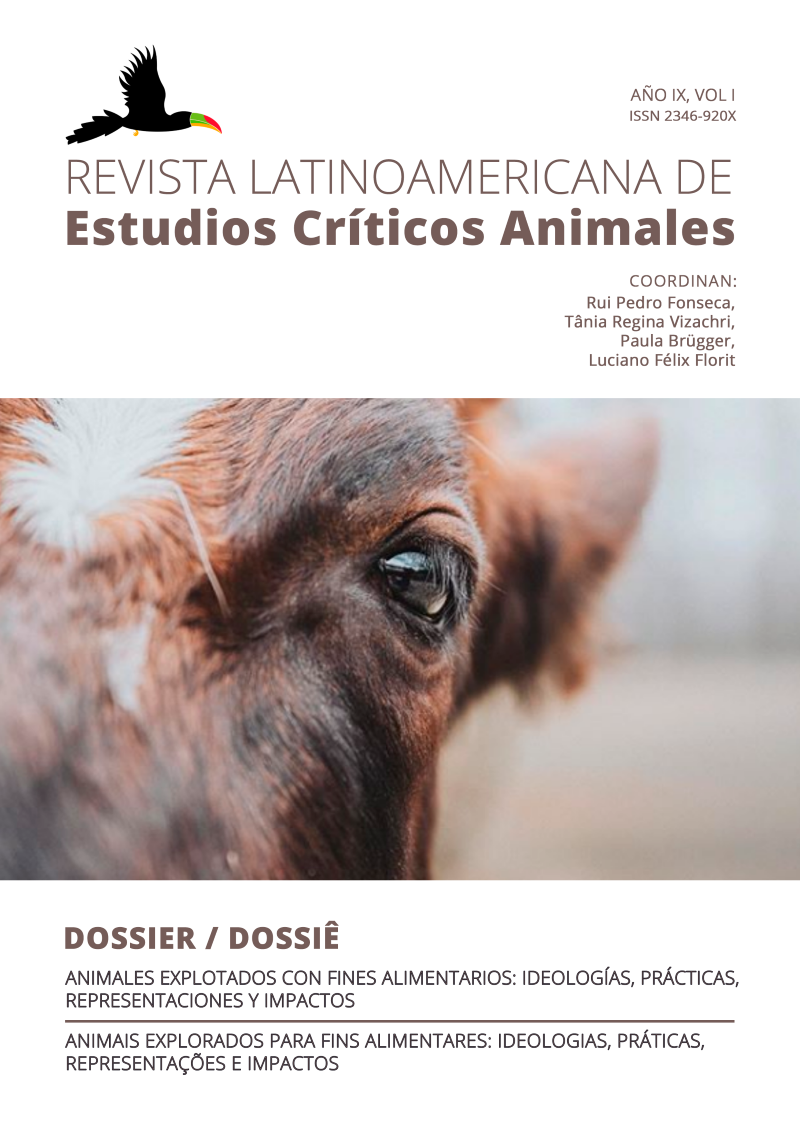NARRATIVE RECREATION THROUGH THE ANIMAL VOICE IN THE STORY OF A SEAGULL AND THE CAT WHO TAUGHT HER TO FLY, BY LUIS SEPÚLVEDA
Keywords:
political animal, animal rights, antropomorphization, narrative voicesAbstract
Most storytellers from before the 20th century made use of satirical animal narrators, the subject of whose satire – be it by means of fables, epics or early novels – was mankind. When an animal in such a story is mocking something, it is meant to indicate something that is wrong in the real world. The animal, ridiculing things in this manner, plays a social role through which it is possible to criticize society. In this way, a contemptuous view of the animal remained; an animal that is considered inferior. And because it is considered as such, we would have the right to make endure anything at this animal. In this article, through fiction, we week to provide answers to ecological dilemmas by means of a 20th-century Latin American story, in which a conflict is resolved through the animal voice in an original way. In the story, a society based on ethical values is proposed and portrayed, a society where help and solidarity turn this animal utopia into a driving force in the battle against ecological disasters. Thanks to the Luis Sepúlveda’s writing, we will study the animal voice, basing our thought on a Gilles Deleuze’s quote.[1]
[1] “A writer is not a writer man is a politician, and he is a machine man and he is an experimental man (to be a man to become a monkey, or beetle, or dog or mouse, becoming-animal, becoming-inhuman, because the truth is the voice, is the sound, it's by a style that becomes animal, and surely sobriety force).”
References
Andermann, J. (2011). “Tesis sobre la metamorfosis”. En: Centro de Estudios de Teoría y Crítica Literaria (Cetycli), Boletín 16, p. 14.
Arenas, R. (2006). El Portero. Barcelona, España: Tusquets.
Axtaga, B. (2017). Memorias de una vaca. Boadilla del Monte, España: SM.
Baker, S. (2000). The Postmodern Animal. Londres, Inglaterra: Reaktion.
Bianciotto, G. (1995). Bestiaires du Moyen Age. París, Francia: Stock.
Bolaño, R. (2005). El gaucho insufrible. Barcelona, España: Anagrama.
Cyrulnik, B. (8 de enero de 2014). Les chimpanzés ont-ils des droits ? Huffingtonpost. Recuperado de: https://www.huffingtonpost.fr/boris-cyrulnik/les-chimpanzes-ont-ils-des-droits_b_4555179.html.
Coetzee, J.M. (1999). The lives of animals. Princeton, Estados Unidos: Princeton University Press.
Costello, E. (2004). J.M. Coetzee. Trad. de: J. Calvo. Barcelona, España: Mondadori.
Fontenay de, E. (1998). Le silence des bêtes. La philosophie à l’épreuve de l’animalité. París, Francia: Fayard.
Deleuze, G. y Guattari, F. (1975). Kafka, pour une littérature mineure. París, Francia: Les éditions de Minuit.
Derrida, J. (2008). El animal que luego estoy si(gui)endo. Trad. de: C. de Perreti y C. Rodríguez Marciel. Madrid, España: Trotta.
Haraway, D. (1985). Simians, Cyborgs, and Women. The Reinvention of Nature. Nueva York, Estados Unidos: Routledge.
Kofman, S. (1976). Autobiogriffures. París, Francia: Christian Bourgeois Editeur.
Lámbarry, A. (2011). El otro radical, La voz animal en la literatura hispanoamericana de la segunda mitad del siglo XX. Puebla, México: Universidad Iberoamericana Puebla.
Matignon, L. K. (2000). Sans les animaux le monde ne serait pas humain. París, Francia : Ed. Clés, Albins Michel.
Ocampo, S. (2006). Cuentos completos I y II. Buenos Aires, Argentina: Emecé editores.
Sánchez, L. (2006). Indiscreciones de un perro gringo. Guaynabo, España: Alfaguara.
Sepúlveda, L. (1996). Historia de una gaviota y del gato que le enseñó a volar. Barcelona, España: Tusquets Editores.
Sepúlveda, L. (3 de abril de 2009). Entrevista a Luis Sepúlveda. Recuperado de: https://elpais.com/cultura/2009/04/03/actualidad/1238770800_1238775841.html.
Tarazona, D. (2008). El animal sobre la piedra. Oaxaca, México: Almadía.
Yelin, J. (2011). “El giro animal, Huellas kafkanias en la escritura de Cesar Aira y Wilson Bueno”. En: Centro de Estudios de Teoría y Crítica Literaria (Cetycli), Boletín 16, p. 20.
Wallace, D. F. (2005). Consider the lobster. Boston, Estados Unidos: Little, Brown and Co.
Downloads
Published
Issue
Section
License
Copyright (c) 2023 Revista Latinoamericana de Estudios Críticos Animales

This work is licensed under a Creative Commons Attribution-NonCommercial-ShareAlike 4.0 International License.
La Revista Latinoamericana de Estudios Críticos Animales con ISSN 2346-920X se adhiere a las diferentes iniciativas que promueven el acceso libre al conocimiento, por lo que todos los contenidos de la misma son de acceso libre y gratuito y publicados bajo la licencia Creative Commons, que permite su difusión pero impide la alteración de la obra e incluye siempre mención al autor/a y fuente.
Es decir, una licencia de tipo Atribución-NoComercial-SinObraDerivada.
Por ello, los correos electrónicos de los autores se encontrarán a disposición de los lectores, en caso de que deseen contactarlos personalmente.




